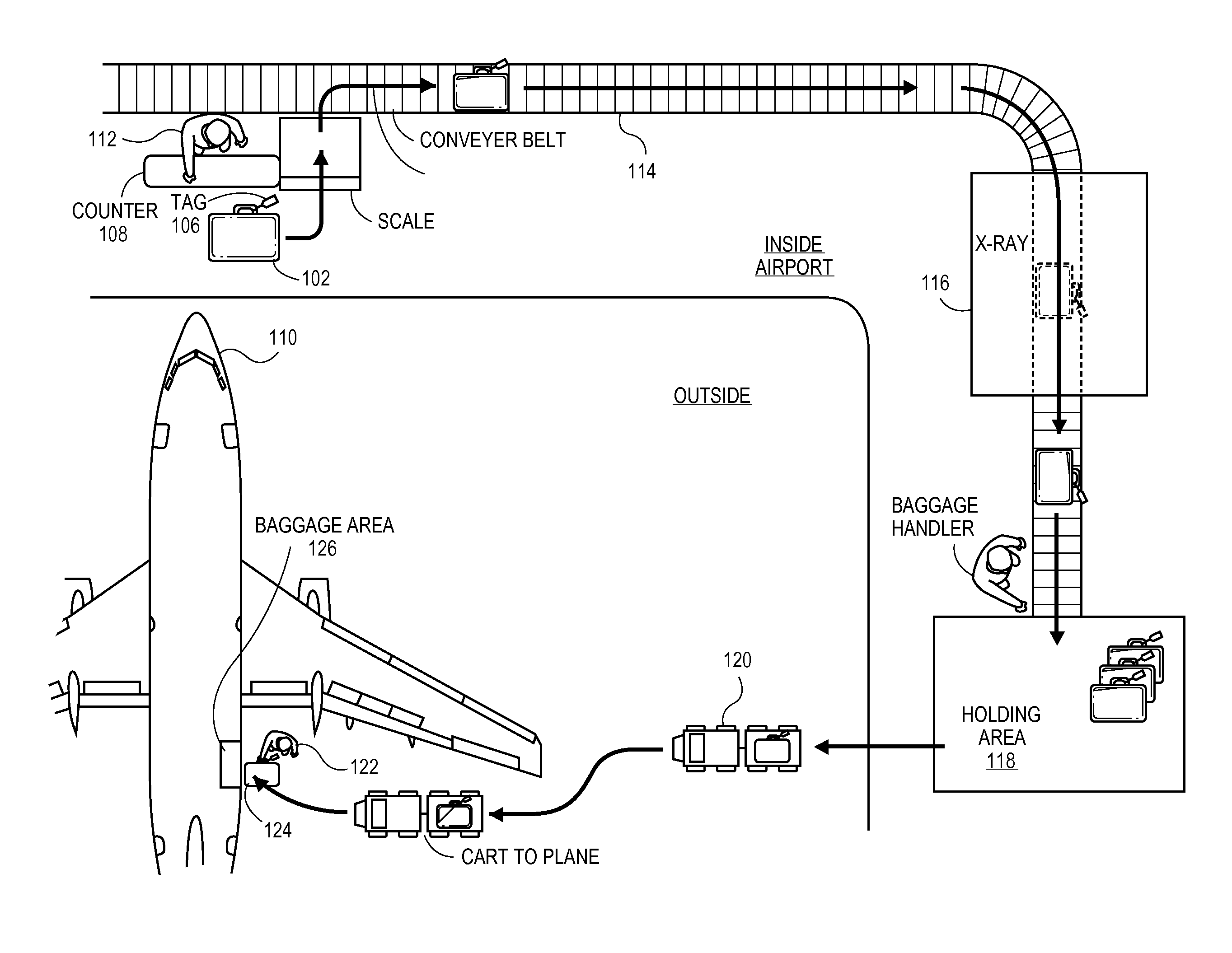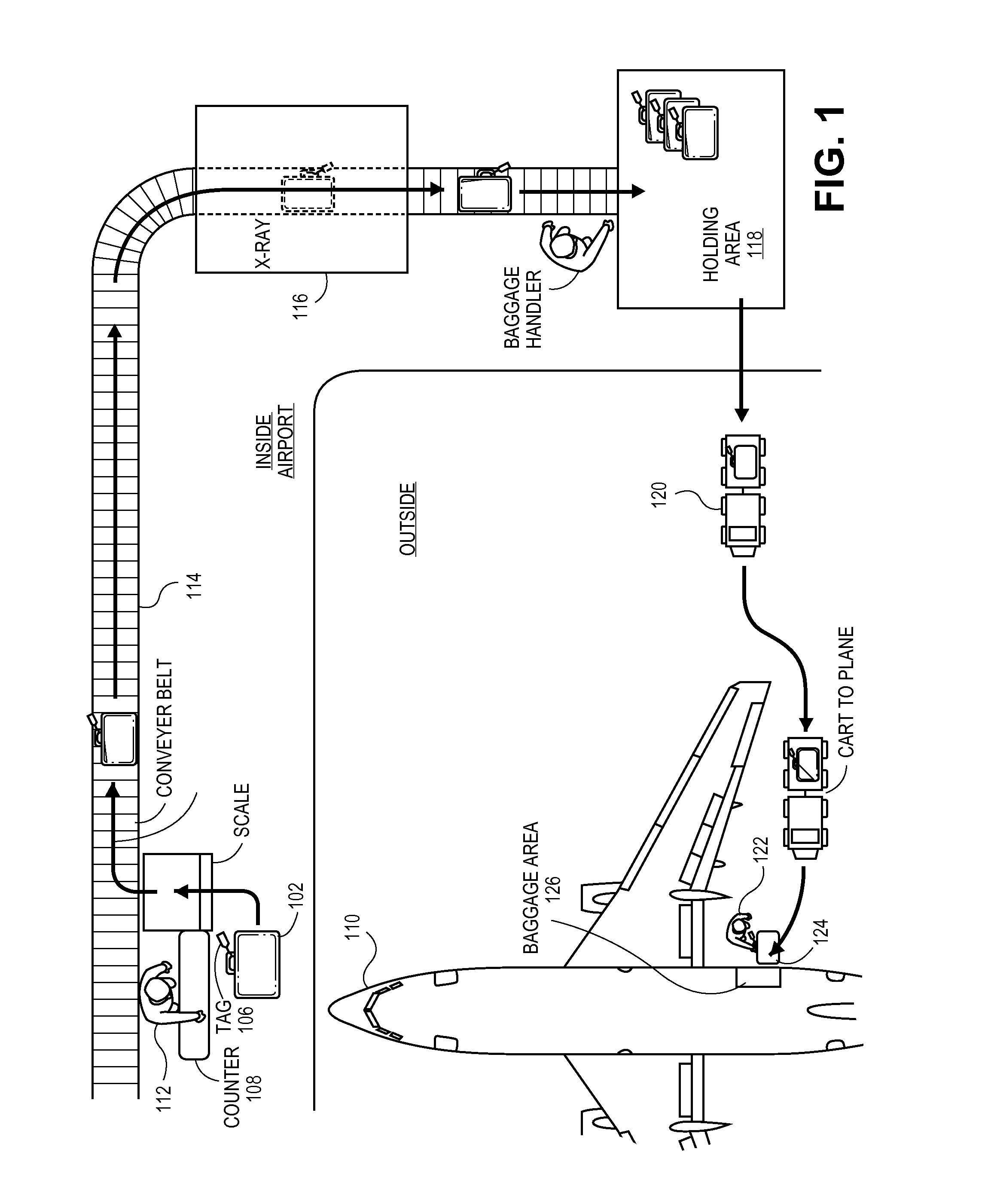Methods and systems for gps-enabled baggage tags
a technology of gps and baggage tags, applied in the field of self-regulation software and hardware for electronic tags, can solve the problems of unreadable rfid tags, unreliable gps-enabled baggage tags, and inability to accurately read barcoded baggage tags of 15% to 30%, so as to achieve the effect of enabling gps and cellular communication and adding intelligence over tim
- Summary
- Abstract
- Description
- Claims
- Application Information
AI Technical Summary
Benefits of technology
Problems solved by technology
Method used
Image
Examples
Embodiment Construction
[0020]One of the important aspects of the present invention is the ability of the baggage tag to comply with FAA, FCC, and TSA regulations while concurrently being able to monitor and manage its own operations (self-regulate) without having to rely on external components or servers for instructions, power, directions, etc. As described below, although the baggage tag of the present invention does communicate with an external component, such as a server operated by a tag system service provider, such as Connxys Technology, Inc. of Santa Barbara, California, this communication is not critical to the tag's operation. This communication is primarily for the tag to obtain itinerary updates and for the server to send specific learned and / or historical information about the journey that the tag is to undertake. This is data that the server has learned from other tags that have gone on the same and similar journeys.
[0021]Another important aspect of the present invention, closely related to ...
PUM
 Login to View More
Login to View More Abstract
Description
Claims
Application Information
 Login to View More
Login to View More - R&D
- Intellectual Property
- Life Sciences
- Materials
- Tech Scout
- Unparalleled Data Quality
- Higher Quality Content
- 60% Fewer Hallucinations
Browse by: Latest US Patents, China's latest patents, Technical Efficacy Thesaurus, Application Domain, Technology Topic, Popular Technical Reports.
© 2025 PatSnap. All rights reserved.Legal|Privacy policy|Modern Slavery Act Transparency Statement|Sitemap|About US| Contact US: help@patsnap.com



